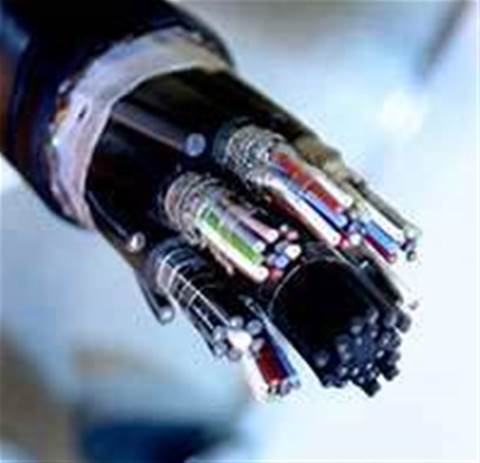Optus has recorded a new peak in the number of broadband customers on its hybrid-fibre coaxial (HFC) cable network, as the telco prepares to migrate customers onto the National Broadband Network.
Despite an ongoing decline in the number of telephony customers on its cable network — from 503,000 to 498,000 between June 2011 and 2012 — the telco recorded a 1.7 percent increase in the number of those customers with broadband products, from 426,000 in June 2011 to 433,000 as of June 30 this year.
Though the growth is "modest" according to analysts, the number is a new peak for Optus, which has seen a decline in its overall cable customer base over the past four years, peaking in 2008.
The broadband growth also helped to slightly buoy Optus' financial results, where a 4.6 percent drop in fixed line broadband revenues was recorded for the first quarter of the financial year.
Optus chief financial officer Murray King attributed the uptick in cable broadband customers to the telco's 50GB free broadband offer, as well as "increased productivity" in sales channels.
Analysts said the growth was part of a move to take advantage of what remained of the cable network.
"There is value in incumbency, so it isn't surprising that Optus continues to promote and sell connections on the cable," Telsyte telco analyst Chris Coughlan told iTnews.
"For customers, some of which will need to wait many years for NBN, the HFC broadband solutions from both Telstra and Optus provide the highest throughput than any other fixed technologies they have access too."
Tony Brown, senior analyst with Informa Telecoms & Media, said rising demand for video services had fuelled greater growth in fixed line broadband generally, but the cable network particularly allowed Optus to easily bundle telephony, broadband and subscription television as significant services.
"One needs only look at the way in which global cable operators such as StarHub in Singapore, JCOM in Japan or even Virgin Media in the UK embrace this multi-play strategy to see the benefits that Optus can continue to accrue from its HFC network - even with the NBN in deployment," he said.
"By building up its multi-play subscriber base via its HFC network Optus not only increases ARPU [average revenue per user] but also lowers churn because subscribers are less likely to defect if they are taking a bundled service from which they are getting a good value deal."
He said customers on cable networks in Australia were less likely to churn to the NBN rollout as those on slower ADSL speeds and that "even [fibre-to-the-home] poster child South Korea still has nearly six million HFC cable broadband subscribers".
Optus finished upgrading the cable network to the DOCSIS 3.0 standard last year, enabling customers to pay a premium for speeds of up to 100 Mbps on the downlink, much like those offered on the NBN.
But Ovum analyst David Kennedy speculated most customers on Optus' cable networks had opted for lower speed tiers — such as 25 Mbps download — than the 50 Mbps and 100 Mbps more typically identified with advantages from the NBN.
Cable deals cut short?
Moves by broadband customers to take advantage of higher-than-ADSL speeds on the cable network are likely to be relatively short-lived.
Under Optus' $800 million deal with NBN Co, which gained regulatory approval last month, Optus will migrate customers off cable and onto fibre once premises in NBN areas are deemed ready for service.
An Optus spokeswoman said large-scale migrations will begin from 2014, cutting short the contracts of newer or loyal cable customers.
Optus chief country officer Paul O'Sullivan said the transition will happen seamlessly, with the company looking to replicate its cable products on the NBN fibre network and potentially upsell existing customers onto higher speed tiers.
He said any notion of increasing the contract value by building the customer base were highly hypothetical but that the company would "make sure that when we do that, that we've optimised it from the point of view of our shareholders".
"I think we need to keep that in context in the sense that we already have significant market share in HFC areas," he said, citing internal statistics of a 30-40 percent market share in cable-serving areas alongside Telstra.
"We're really at a very high market share and the ability to increase it even more would be pretty restricted in terms of what you could achieve. Where we have HFC network deployed, clearly we're on a level-playing field on fixed [broadband].
"At the end of the day we're about building a sustainable business and our focus will be on marketing to Australians a broadband offering ... it won't be because of necessarily a short-term gain around the NBN deal."
The prevalence and usefulness of Optus' cable network could also come back into the spotlight should the Coalition gain government next year.
The Coalition has detailed plans to use existing HFC networks alongside other technologies in lieu of fibre-to-the-home rollouts in some areas.
"Given the fact we remain in the nascent stages of the NBN rollout, and factoring in the current probability of a change in the Federal Government at next year's election, the Optus HFC network will still play a major role for the company in the medium term if there are — as is eminently possible — further delays in NBN rollout under either Labor or the Coalition," Informa's Tony Brown said.








_(11).jpg&h=142&w=230&c=1&s=1)



.jpg&w=100&c=1&s=0)
_(8).jpg&w=100&c=1&s=0)









